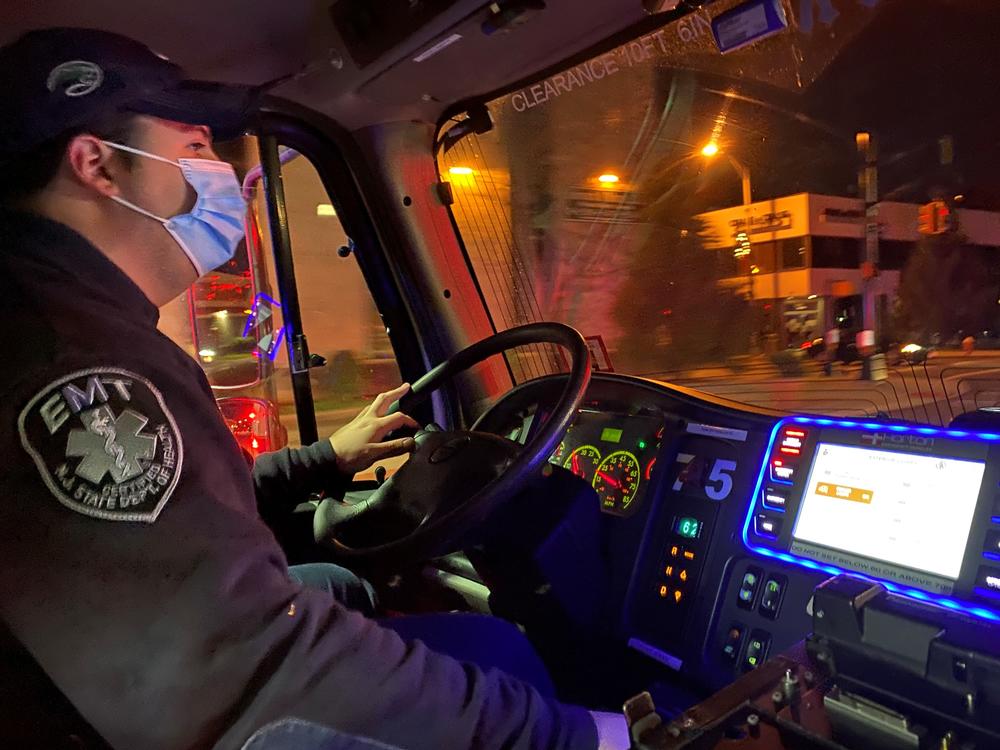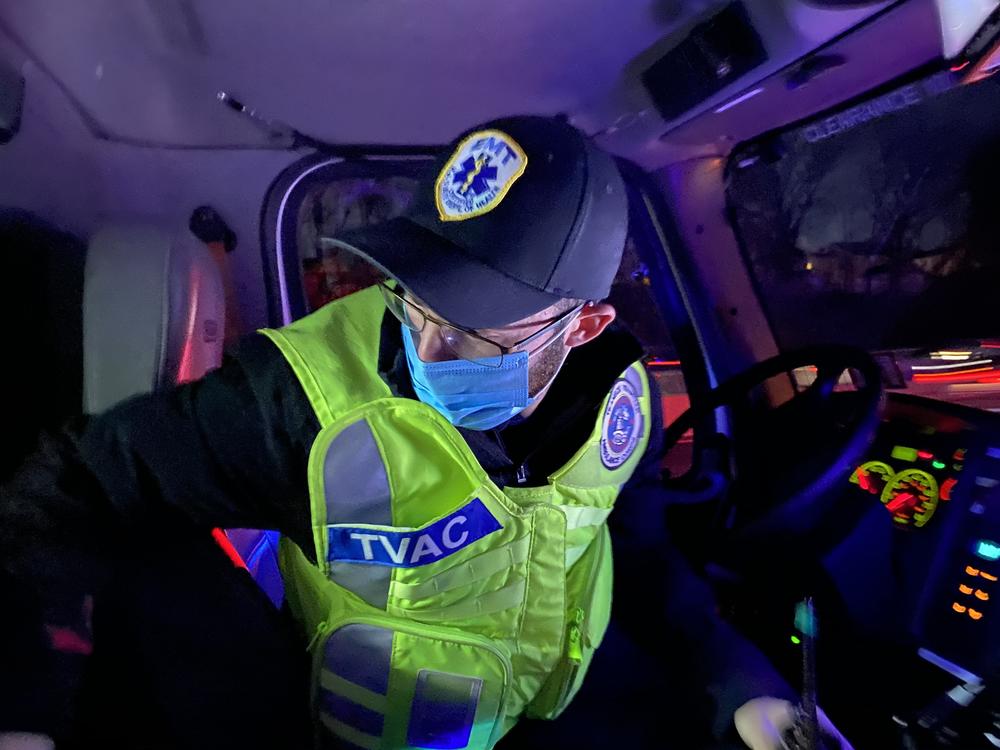Section Branding
Header Content
New Jersey EMTs In Early Epicenter Of Coronavirus Outbreak Brace For Surge
Primary Content
When COVID-19 cases increased in New Jersey again this fall, a volunteer ambulance crew in the epicenter of the state's spring outbreak held its breath, waiting for what they thought would be an inevitable spike in calls, too.
They're still waiting.
Even as the state's hospitalizations have reached levels not seen since mid-May, the all-volunteer crew at the Teaneck Volunteer Ambulance Corps say they're only getting a handful of COVID-19-related calls a week. Back in the spring, the ambulance corps was slammed with twice the usual call volume — almost every single one COVID-19-related for patients in respiratory distress, cardiac arrest or already dead at home.
"We've definitely had more patients we've transported who have tested positive or been around someone who was positive," said Chief Jacob Finklestein, 25. "But we're definitely not seeing the same type of grave medical conditions that we were seeing in March and April for the most part."
'Doesn't mean that people aren't still getting sick'
Hospital and EMT leaders say that's partly because testing is more widespread, meaning people can find out they're sick earlier — and seek medical treatment. Doctors are also better at treating the virus and those sick in the second wave tend to be younger and don't seem to be waiting as long to get medical help.
"That doesn't mean that people aren't still getting sick and it doesn't mean that they don't still need care," said Barbara Platt, president of the EMS Council of New Jersey. "They're just not all necessarily calling 911."
Platt said "it's definitely not as chaotic" but with another round of holidays around the corner and the projected peak of hospitalizations expected by mid-January, it's impossible to predict what will happen. The "back to back to back lack of social distancing is probably going to further feed this," she said.
Teaneck, a North Jersey suburb of about 42,000 residents, was an early epicenter for the virus and its infection rate was slightly higher than New York City's in the spring. At the height of the pandemic in April, volunteer EMTs were burning through personal protective equipment and relying on half the number of staff to respond to calls because many of them were out sick, on quarantine or didn't feel comfortable riding.
At the time, New Jersey was at its peak of 8,200 hospitalizations.
"I was just like, is it going to stop? Is this going to end? Like, is it going to get better?" said 22-year-old Joe Horowitz, a volunteer who responded to calls daily throughout the worst of the pandemic in March and April. "There was not for months, there was not a single easy call for me."
COVID-19-related calls suddenly stopped
But then the COVID-19-related calls in Teaneck suddenly stopped. There was one call in May and zero in June, July and August. The reprieve helped the volunteers finally take some time to take care of themselves, mentally and physically, including losing the weight they gained from all the food donated by locals.
"I started thinking about myself again," Horowitz, a senior college student, said.
In September, coronavirus cases in the state began rising again and a handful of 911 COVID-19 calls started coming back in October but even then, patients weren't as sick.
"I have not seen the severe low oxygen levels in the 50s and 60s, I have not seen that recently," said Amiel Rimberg, 22, another volunteer. "I don't think we will see anything like what we saw before. We might see smaller waves."
Now, the crew wears surgical masks on every call, reserving N-95 masks for suspected COVID-19 cases.
"We've just been stocking up because we're afraid if things become hard to get again," Finklestein said.
Finklestein said some gear like face shields and gowns became much easier to buy but N-95s are still hard to come by, especially for a small non-profit trying to bid against larger companies or school districts. If things stay relatively quiet, Finklestein said he'll have enough supplies for three months but if calls spike again, he'll run out in two weeks.
Days are a lot quieter
On a recent night shift, there were no COVID-19 calls. A woman who had chest pains was taken to the hospital where the Teaneck ambulance was the only one at the emergency room entrance.
"On a normal day, even without COVID-19, this whole area would be filled with ambulances but it's empty now. We are the only ones here," Finklestein said as he pulled up. In the first wave of the pandemic, Finklestein said he'd have to wait as long as 45 minutes with a patient in his ambulance until a bed opened up. The wait times and the refrigerated trucks for bodies are now gone.
Hospitalizations have reached 3,600 out of 21,000 total beds. Hospitals remain at about 70% capacity, which includes both COVID-19 and non-COVID-19 patients.
Days are a lot quieter for the Teaneck EMTs. They're back to responding to more normal calls, like car crashes and slip and falls. But volunteer Leah Kahan said it's still a risk.
"It's definitely scary, we know we have the protections, we know we have the PPE. But you still never know," she said.
Copyright 2020 WNYC Radio. To see more, visit WNYC Radio.


